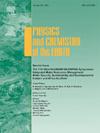Study on the mechanical properties of desert sand concrete under dry-wet cycles with sulfate erosion
IF 3
3区 地球科学
Q2 GEOSCIENCES, MULTIDISCIPLINARY
引用次数: 0
Abstract
To evaluate the potential application of desert sand concrete (DSC) in the construction industry, the evolution of its properties in the conjoint impact of sulfate corrosion and dry-wet (D-W) cycles was investigated. In this study, a range of variables were taken into account, including desert sand replacement rate (DSRR, 0,40,60%), D-W cycles (0, 30, 60, 90, 120 and 150 cycles) and mass fraction of sodium sulfate solution (3, 5 and 7%). The performance deterioration of DSC such as ultrasonic parameters, dynamic elastic modulus and damage parameters were analyzed under sulfate environment. Uniaxial compression tests ascertained the peak stress, peak strain and the compressive stress-strain curve of DSC under a range of sulfate D-W cycles. Microscopic testing techniques such as scanning electron microscopy (SEM) and X-ray diffraction (XRD) were utilized to examine the microstructure morphology and phase composition of DSC. The experimental findings demonstrated that the ability of DSC to resist corrosion characteristics could be effectively improved under sulfate attack and D-W cycles when desert sand was added at 40%. The peak stress of DSC was improved first and then diminished with the progression of D-W cycles, attaining the maximum value at 60 D-W cycles, while peak strain gradually decreased and then increased. SEM and XRD test results revealed that sulfate crystals and continuing formation of expansive materials like gypsum (CaSO4·2 H2O) and ettringite (AFt) were the principal elements causing the degradation of DSC as the D-W cycles increased.
求助全文
约1分钟内获得全文
求助全文
来源期刊

Physics and Chemistry of the Earth
地学-地球科学综合
CiteScore
5.40
自引率
2.70%
发文量
176
审稿时长
31.6 weeks
期刊介绍:
Physics and Chemistry of the Earth is an international interdisciplinary journal for the rapid publication of collections of refereed communications in separate thematic issues, either stemming from scientific meetings, or, especially compiled for the occasion. There is no restriction on the length of articles published in the journal. Physics and Chemistry of the Earth incorporates the separate Parts A, B and C which existed until the end of 2001.
Please note: the Editors are unable to consider submissions that are not invited or linked to a thematic issue. Please do not submit unsolicited papers.
The journal covers the following subject areas:
-Solid Earth and Geodesy:
(geology, geochemistry, tectonophysics, seismology, volcanology, palaeomagnetism and rock magnetism, electromagnetism and potential fields, marine and environmental geosciences as well as geodesy).
-Hydrology, Oceans and Atmosphere:
(hydrology and water resources research, engineering and management, oceanography and oceanic chemistry, shelf, sea, lake and river sciences, meteorology and atmospheric sciences incl. chemistry as well as climatology and glaciology).
-Solar-Terrestrial and Planetary Science:
(solar, heliospheric and solar-planetary sciences, geology, geophysics and atmospheric sciences of planets, satellites and small bodies as well as cosmochemistry and exobiology).
 求助内容:
求助内容: 应助结果提醒方式:
应助结果提醒方式:


